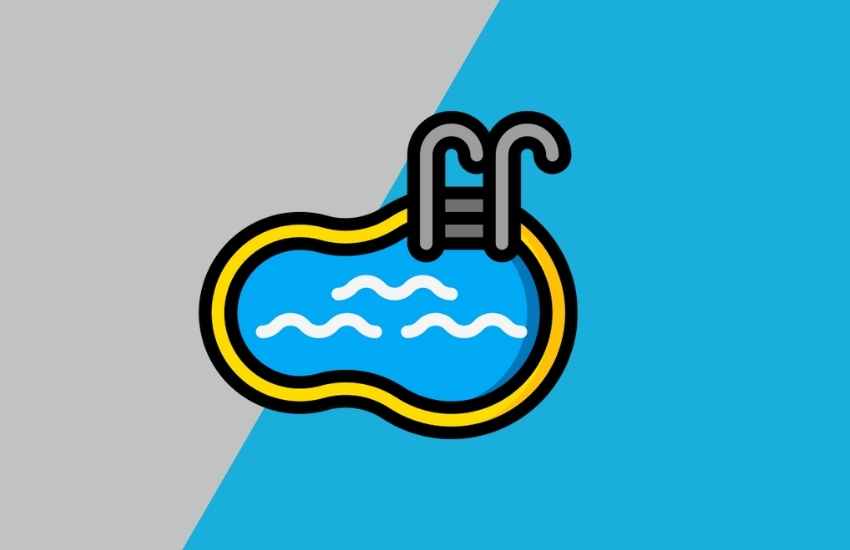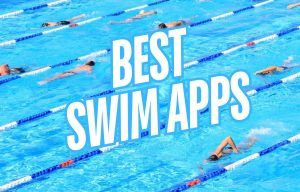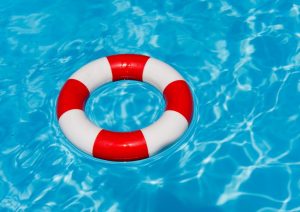
7 Best Swim Snorkels for Better Technique and Faster Swimming
Ready to throw down on a new swimmer’s snorkel? Here are reviews of the best swim snorkels for lap swimming.

Looking for some simple tips for winterizing your above-ground pool? Here’s an overview of when and how to prepare your pool for winter.
An above-ground pool is great in the summer, giving you all the joy of a swimming pool in your own yard. You can swim to your heart’s content, splashing around between the pool walls, soaking up the last of the summer’s warmth.
But as the leaves turn, the temperature drops and winter starts to show traces of rolling around the corner, it’s time to close the pool for the winter.
Reopening your above-ground pool in the spring is much easier when you take a few steps to winterize the pool closing process before the winter months.
In this post, we will talk you through the winterizing process for an above-ground pool, from the winter pool cover, return lines, and rubber plug to pool antifreeze chemicals.
Let’s dive right in.
There are a few basic steps you can follow when it comes to winterizing a pool. Let us go through this step by step, from the pool equipment needed to the final steps of the process.
Start by gathering the important equipment you need to keep your pool water in good condition over winter. You will need the following:
Once you have got all of these together, it is time to start preparing your pool floor for the winter.
Before winterizing your pool, you need to clean it properly. Just like anything else in your life, you should not put your pool away dirty!
Skim the surface, vacuum the entire pool, and brush down the walls completely, using pool cleaners of your choice.
Cleaning the pool properly at this stage will make it much easier to keep your water properly balanced, as well as help to reduce algae growth by leaving as little as possible to feed algae in the water.
Knowing what is going on with the pool chemistry is a vital part of keeping your pool in the best condition possible. Testing your water before you start closing your pool down is a more important step than you might expect!
Bust out your preferred pool testing kit, whether it’s a simple test strip or your favorite digital pool tester and let’s get to testin’.
What you are looking for is a pH of somewhere between 7.4 and 7.6, as well as alkalinity of around 125 ppm, calcium around 200 ppm, and chlorine levels around 1-3 ppm.
In general, it is better to be a bit above those thresholds rather than a bit below because they will slowly decrease over time while your pool is dormant.
The easy way to fully balance your water for winter is to simply use a pre-prepared winterizing chemical kit.
Some of these require you to use your siphon pump or filter but may depend on whether you use a cartridge filter or sand filters. The best course of action is always to check the instructions that come with your kit – and make sure you have bought enough for your pool size!
To really power up your pool chemicals for the winter, add some sort of pool shock – either a chlorine shock or a non-chlorine shock – the day before you put the cover on.
You can also add a winter algaecide to the water for added security.
Pool lines and hoses, from the filter pump lines to the lines that blow air, can be damaged by ice expansion. Remove all of your lines from the pool pump and pool filter to prevent this.
Simply disconnect them, let all of the water run out, air dry them, and then store the empty, dry lines in a dry place along with your other pool accessories.
Keeping them dry is essential, as they can get moldy very easily!
If excess water accumulates in your skimmer and then freezes, you could have a problem. To avoid this, you should remove your skimmer basket and store it with your other accessories.
Then, simply cover it with a winter skimmer cover plate to prevent water from building up.
Cleaning up the pool pump is easy. Start by removing all the drain plugs and leaving each drain plug to empty completely. Then, remove the pump basket, chlorinator, and hoses, before putting them aside indoors for the winter.
The pool filter can be a little more complex, depending on what sort of filter you have. Whatever you have, though, you are going to need to separate out the filter tank, filter hoses, filter cartridge, and possibly gas supply.
Store all of these in a dry, safe place indoors, potentially raised off the ground on concrete blocks to prevent cold damage.
You should not just put a cover straight on top of your above-ground pool wall. When ice and snow pile on top of a cover, it can dip down to the pool water, which can be a problem.
Having a pool cover pump on hand over the cooler months is a handy way to help remove pooling water on the cover, but having a pillow underneath can help prevent water from accumulating.
You will need to inflate a pool air pillow and add that in first to hold the cover and reduce the demand accumulated snow and rain will make on the cover.
Then, simply add the cover, and use water wall bags and clips to hold it firmly in place around the edges.
There are more than a few reasons why you should properly winterize your pool at the end of the summer.
For starters, it makes reopening much easier in the spring. Balancing the water and covering the water before shutting it down saves you a lot of work when you decide to open your above-ground pool.
Algae, bacteria, and all the rest don’t take an off day just because you aren’t going to get in the water.
Leaving the water contaminant-free dramatically cuts down the mess, including cloudy pool water, that will require cleaning when the weather warms.
Secondly, properly closing your pool down helps protect the structural integrity of the pool and your pool equipment.
Winter weather can get pretty nasty, between snow, wind, excessive rainfall, and more wind. Leaving the pool not drained to an optimal level will subject the pool walls to nature’s fury, warping and damaging the walls and equipment.
Additionally, there’s freeze damage to contend with for places that get particularly cold winters.
For smaller above-ground pools, like the ones made by Bestway and Intex, fully disassembling your pool for the winter necessitates draining the pool.
But for permanent above-ground pools, you should never fully drain the pool. Leaving water in the pool helps to protect the walls and liner.
Lower the water so that is just below the skimmer and jets. This will help prevent water from freezing in the plumbing and keep an eye on the water levels over the winter so that it’s high enough for the pump to still do its job.
And of course, not fully draining the pool over the winter means that you will have less water to put in when you reopen as the weather gets warmer in the spring.
While you do not technically have to apply a winter cover to your pool surface, or any other winterizing options, it is generally advisable to do so if you live somewhere with cold winters.
You can leave your pool water uncovered for easy swimming over the winter, but this can lead to issues if you are not regularly using the pool.
From algae growth to changes in water chemistry to the possibility of freeze damage to your pool liner if your area experiences freezing temperatures, there are many things that can go wrong with a pool in a cold climate.
You do not have to go as far as to let the whole thing drain completely, but ice expansion, rainwater, and direct sunlight can all cause issues when it comes to protecting your pool over the winter.
It’s crucial to properly balance the water and shock the pool before closing it down for the colder months as it will make reopening the pool much, much easier.
Non-chlorine shocks are a good option when closing the pool as they are easier on your pool equipment and won’t leave the chalky residue that often comes with chlorinated shocks.
Combine a quality pool shock with an algaecide before shutting the pool down and you will save yourself a whole ton of cleaning and maintenance in the spring.
Yes, it’s important to keep water running through the pump and pool. This will help eliminate freezing of the plumbing and the water in the pool (moving water has a more difficult time freezing), which protects the lines in the pool.
Most pool pumps have a freeze guard setting that will automatically kick in when the weather dips below a specific point (usually around 35 degrees Fahrenheit).
6 Reasons to Cover Your Above-Ground Pool. Covering your swim pool is one of the easiest ways for you to protect your pool, keep the water clean and reduce energy costs.
How to Open Your Above-Ground Pool Like a Boss. Looking to open your above-ground pool for a season of sun and fun? Here is a simple 9-step process for opening your pool like a champ.
Subscribe to the YourSwimLog.com newsletter and get tips and advice on how to swim faster every weekday morning, straight to your inbox.
Join 33,000+ swimmers, coaches, and swim parents learning what it takes to swim like a boss.
Unsubscribe anytime. Email will never be shared or sold.

Olivier Poirier-Leroy Olivier Poirier-Leroy is the founder of YourSwimLog.com. He is an author, former national level swimmer, two-time Olympic Trials qualifier, and swim coach.

Ready to throw down on a new swimmer’s snorkel? Here are reviews of the best swim snorkels for lap swimming.

Looking to get some new swim gear on a budget? Shop the best Black Friday deals for swimmers in this exclusive guide.

Looking for the best swimming app to maximize your time and effort in the water? Here’s a look at the top swim apps for conquering your swim workouts.

Wondering how often you should be testing the water in your pool or spa? Here’s a detailed look at how frequently you should test your pool. Your swimming pool and spa relies on being properly balanced to keep the water clean and safe for swimming. As a pool owner, you

Fed up with the effects and smell of chlorine in your hair after swimming? Here is how to remove chlorine from your hair once and for all.

The DMC Elite fins are high-performance training fins for competitive swimmers. Here’s a review of why these fins are flat-out awesome.

LANE 6 PUBLISHING © 2012-2024 · PRIVACY POLICY · RETURN POLICY · TERMS OF SERVICE · AFFILIATE DISCLOSURE